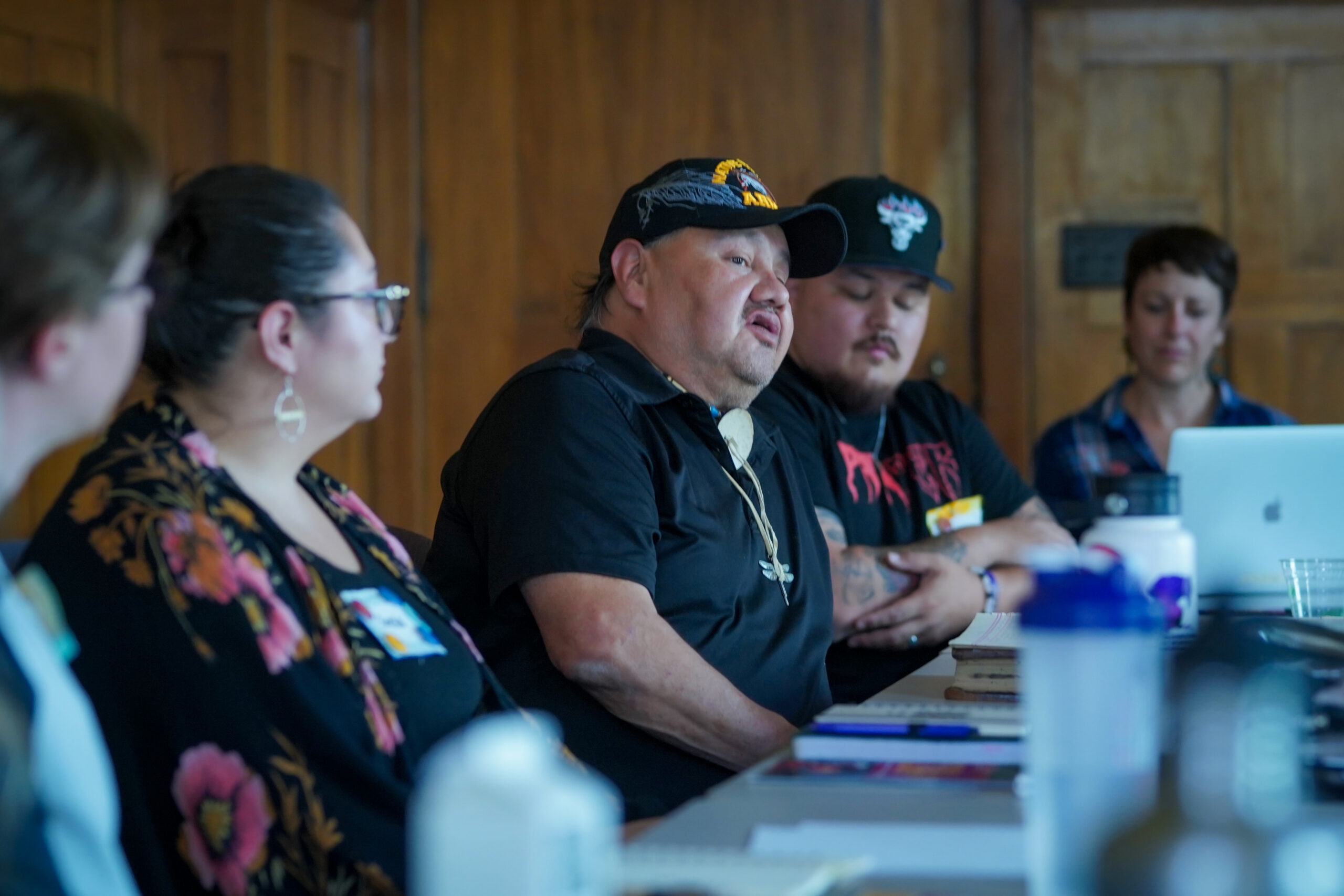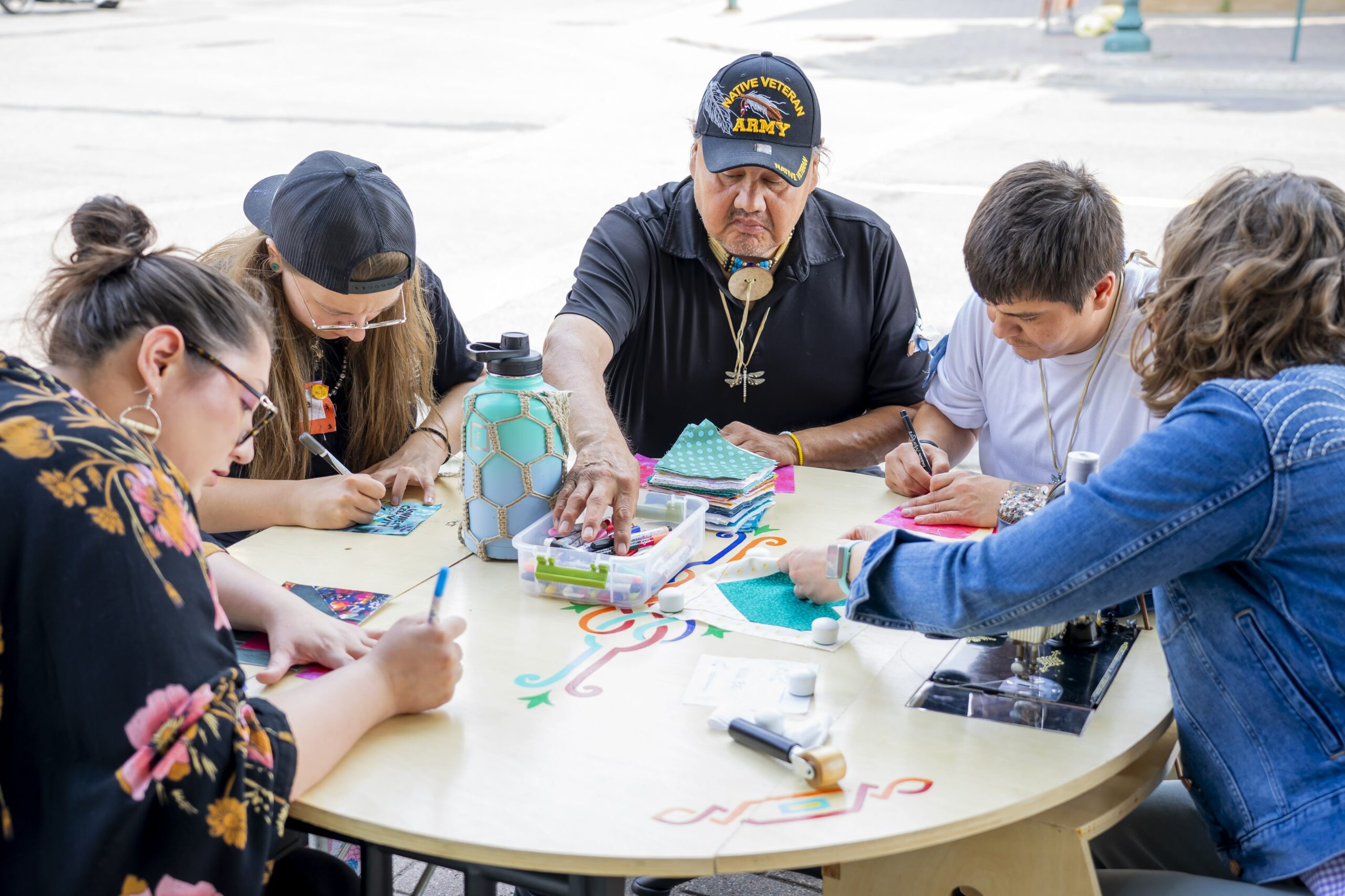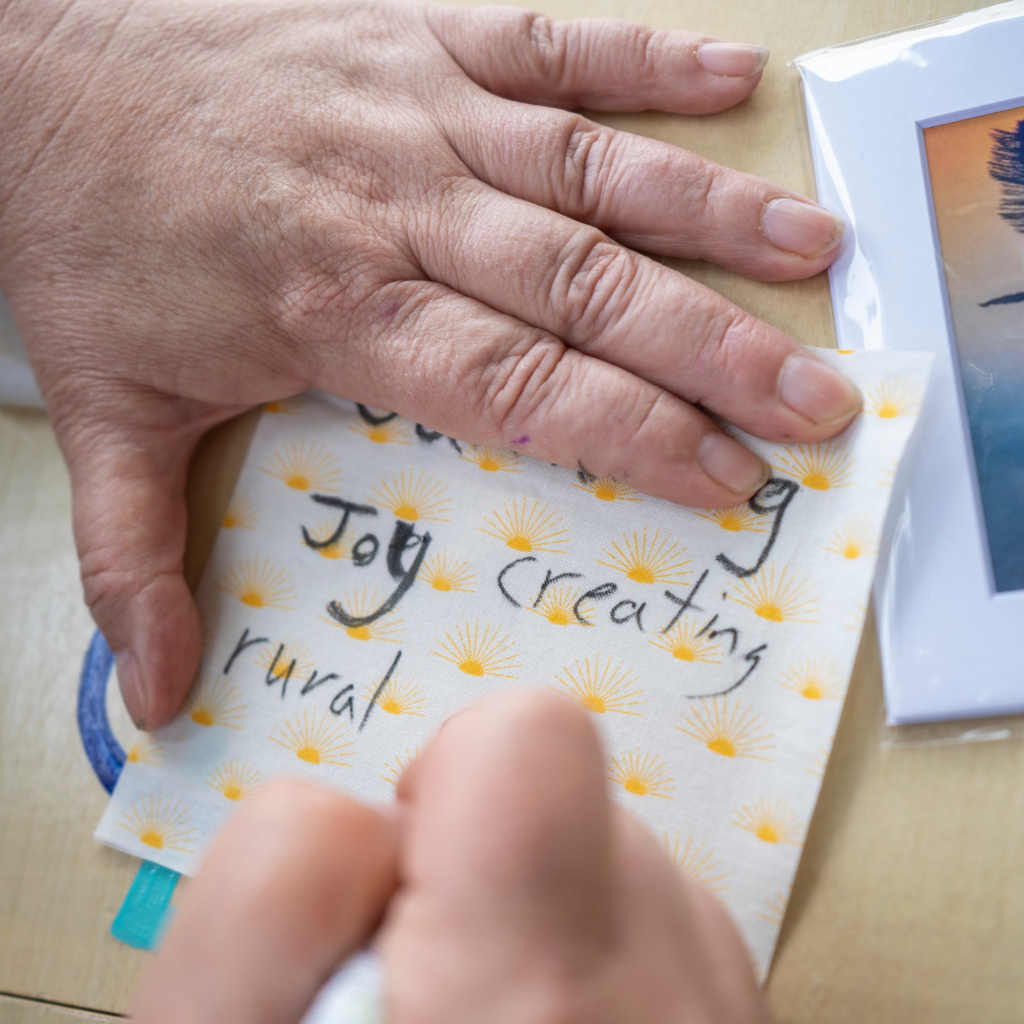Lyle Miller Sr: Touching the Spirit
The Rural Regenerator Fellowship brings together individual artists, makers, and culture bearers, grassroots organizers, community development workers, public sector workers and other rural change-makers who are committed to advancing the role of art, culture and creativity in rural development and community building. Recently, we asked a collective of local writers to sit down with current Rural Regenerator cohort members to share more about their work.
The first twenty minutes of my interview with Lakota artist, teacher, and dancer Lyle Miller, Sr., reveal much more than I expected. It isn’t the questions I ask or his answers, but the fact that, for that initial portion of our phone call, Lyle is driving a friend across town, dropping them off, and making sure they’re going to be OK. Through the course of our interview, it becomes clear that that’s what Lyle does: He helps.
“When I start a piece of artwork,” Lyle says, “I want to help somebody. I think that’s why we’re sent here: We’re supposed to be helping each other, not tearing each other down.” Lyle creates spiritual paintings in acrylic on canvas. “Always spiritual,” he emphasizes. The paintings often feature indigenous ancestors surrounded by circles of light as they are visited by creatures like eagles and butterflies.
“As human beings we’re very fragile. Our spirit is inside of us and that’s what I want to touch,” he says. “By creating something, I want to reach that spiritual depth. It enters through their eyes, through their strongest sense, and it reaches into their spirit. You can clearly see it when they see a work and they feel what you were trying to get across.”
Lyle has been making artwork since he was four years old, but childhood trauma caused him to become quite introverted. “I was very afraid of life,” he says. “I went into myself.” A teacher named Val Pugsley nurtured Lyle’s love of drawing, guiding him “to bring out what was inside of me and put it onto paper.” A high school teacher, Janet Petersen, encouraged him further. It’s perhaps unsurprising that Lyle went on to become a schoolteacher himself.

When his wife was battling terminal cancer in 2005, Lyle sat near her and painted. She told him, “Get your work out there. It does you no good having it hanging up in our house.” He took her advice to heart and began to enter his paintings in competitions and to sell them.
Almost two decades later, he is an established, full-time artist. “I don’t like to let my paintings go,” he says, but he knows that his creations serve others, promoting healing and supporting his own family through sales of his art. “Tunkashila, Great Spirit, gave me this gift. He sent down this medicine to help people and to supplement my income in this society.”
Drawing on History
A member of the Yankton Sioux Tribe, Lyle is committed to reclaiming and preserving Lakota culture, including becoming a certified teacher of Lakota language, a Sun Dancer, and a traditional dancer. Recently, he and his son have begun making Lakota ledger art. Lyle explains that government agents would use ledgers to “write down the annuities, the commodities that each Native American family got.”
For Native people, however, “these ledger books meant nothing to us except as something to draw on.” Although many ledgers are from the late 1800s and early 1900s, the high quality of the paper keeps them usable. “It’s not paper like you think. It’s like currency or a bonded paper. It doesn’t bleed through with ink.”
Early Lakota ledger artists would create “drawings of their exploits in battle and significant events. They wanted to keep record of things in their own way.” Lyle notes that Sitting Bull was one of these artists, creating a collection of ledger drawings in the 1800s that is now in the holdings of the Smithsonian Institute in Washington, DC.
Lyle and his son find ledgers in resale shops and “draw from what we know from our culture, what we’ve experienced. We draw it on in pencil and then go over it with ink, then fill in with color.” Art collectors love it. “They are highly sought-after type of artwork,” Lyle says, but sales are not the main motivation. He takes pleasure in knowing he is contributing to the ongoing of Lakota culture. “It’s very satisfying, to keep something alive that was done a long time ago.”
During the COVID-19 pandemic, Lyle was commissioned to paint a mural, “two semis long,” on the Crow Creek reservation. “They wanted ledger-style buffalo running in the direction of North, because that’s where their buffalo herd is.” The herd recently welcomed the birth of a white buffalo calf, which Lyle calls “a good sign from teachings from long ago.” In Lakota tradition, White Buffalo Woman brought seven ceremonies and the sacred pipe used in those ceremonies. As she left the people, she said she would come back as a little white buffalo during a time of suffering. “I can’t think of a worse time of suffering than COVID-19,” Lyle says. Many people on the reservation no longer practice traditional Lakota spirituality and Lyle says “that’s up to them—each individual can believe what they choose to believe.” Still, it means that the symbolism in his work might be lost on some viewers. “Some of the community don’t really understand the mural too much,” he observes, “but they know that it was painted for them, in order to try to help them.”
A Grandpa in the Group
Being a Springboard Rural Regenerator has broadened Lyle’s professional connections. “It’s taught me a lot being involved with Springboard,” he says. “It opened my eyes to a new generation of artists. I think I’m the grandpa of the group. They looked at me like that,” he says about his cohort, with a laugh. “But they also accept that. We had a good time!”

For his real grandchildren, he hopes that his accomplishments are a reminder that “it’s important to believe in your dreams. It’s important to do something every day of your life. You never know what tomorrow is going to be like. We witnessed that in the pandemic, one day people are here and then they’re not. A million people gone in the US alone.” He wants them to know they should act now, because “if you don’t do something, your dreams will just sit in a drawer.” Lucky for all of us, Lyle heeded the urgings of his teachers and his wife and shared his dreams with the world. To help.
Continue Reading

